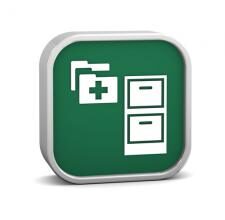IT innovation, global medicine and frustrated medical patients drive the demand for medical travel. But telemedicine also improves patient care and the customer experience of medical travelers. Once again, we welcome medical IT entrepreneur, Agha Ahmed, Managing Partner of GHIMBA, as we explore how IT innovations help patients get high-quality healthcare outside of the USA.
How do IT innovations help provide services that medical travelers can benefit from?
IT innovation, global medicine and frustrated medical patients drive the demand for medical travel. But telemedicine also improves patient care and the customer experience of medical travelers. Once again, we welcome medical IT entrepreneur, Agha Ahmed, Managing Partner of GHIMBA, as we explore how IT innovations help patients get high-quality healthcare outside of the USA.
How do IT innovations help provide services that medical travelers can benefit from?
IT helps deliver safe medical care and a pleasant trip to facilities overseas. For more than 20 years, IT innovations have improved patient care worldwide. Now, these innovations are helping medical travelers, too.
How so?
In telemedicine and m-health, telecommunications, mobile devices and information technologies provide clinical health care at a distance. (M-health is the practice of using mobile technology in healthcare.) There are three important devices and software capabilities that help deliver the promise of medical travel:
- First, there are electronic media records. With an EMR system, it’s easy to gather patient clinical notes, diagnostic scans, medical administrator records, and discharge summaries in digital form. By automating and streamlining clinical workflow, IT cuts the time and effort needed to maintain information and create the data trail needed for medical audits and QA procedures.
- Then, there are smartphones. Our familiar hand-held computers are becoming an important enabler in the cloud-based healthcare infrastructure. An EMR system deployed in the cloud can make a smartphone a virtual healthcare wallet. Patients can access their medical records from a smartphone and share the information with overseas healthcare providers.
- Finally, data mining and analytics. Data mining and analytics technologies combine, prepare and search massive data stores gathered from many sources. Combined with analytics software, a cloud-based EMR system provides easy access to the knowledge and insight that overseas doctors can use to identify medical problems. And, patients can learn about cost-effective treatment for specific diseases and conditions without leaving home.
These innovations work with participants in the medical travel industry to deliver value to patients and business opportunities to entrepreneurs.
What’s the most important thing that IT provides patients and entrepreneurs?
Powerful data sharing and analysis, anywhere in the world. Cloud computing and modern IT devices make it easy to transfer, analyze and share massive amounts of medical data, quickly and safely. IT contributes medical services that patients and overseas healthcare providers can be confident in. There are three notable capabilities.
- IT makes comprehensive medical information accessible. All patient-related data is stored in a single, authoritative source in a cloud computing center. Centralized data management makes it easier for qualified medical travel solution providers to identify gaps in information and synchronize the data and people involved at each step in patient care.
- IT helps patients get the best care available. By hosting medical records, cloud computing centers become part of an ecosystem, which includes globally accredited hospitals and clinics. Healthcare providers anywhere in the world get easy access to medical information before patients arrive. Or, patients can use their smartphones to download information when they arrive. When highly qualified practitioners analyze and share medical information, patients benefit.
- IT provides patients with a smoother, more pleasant trip. Internet data searches and medical travel solution facilitators reduce the time, effort and worry of finding, traveling to and engaging medical facilities overseas.
Cloud computing and other IT innovations can help make offshore treatment a safe, cost-effective alternatives to U.S. healthcare. These innovations can be used with medical travel facilitators and solution providers to deliver world-class medical services.
Where can we find out more about IT and medical travel?
Telemedicine is a major topic in an upcoming conference, the Medical Travel and Global Healthcare Business Summit in Tampa, Florida. If you’re wondering about medical travel business opportunities, you’ll want to check out the conference, which will be held on June 14th through 17th. The summit is designed for healthcare and wellness providers, IT services business leaders, and hospital and clinic administrators. The conference discusses business and technical aspects of medical travel, including how IT, telemedicine and m-health support travel logistics and patient care. The emphasis is on finding and making the most of the many business opportunities available to entrepreneurs and healthcare industry professionals.
For more details visit the event website.
The post How health IT enables safer medical travel and tourism appeared first on The Healthcare IT Guy & Digital Health Nexus.








